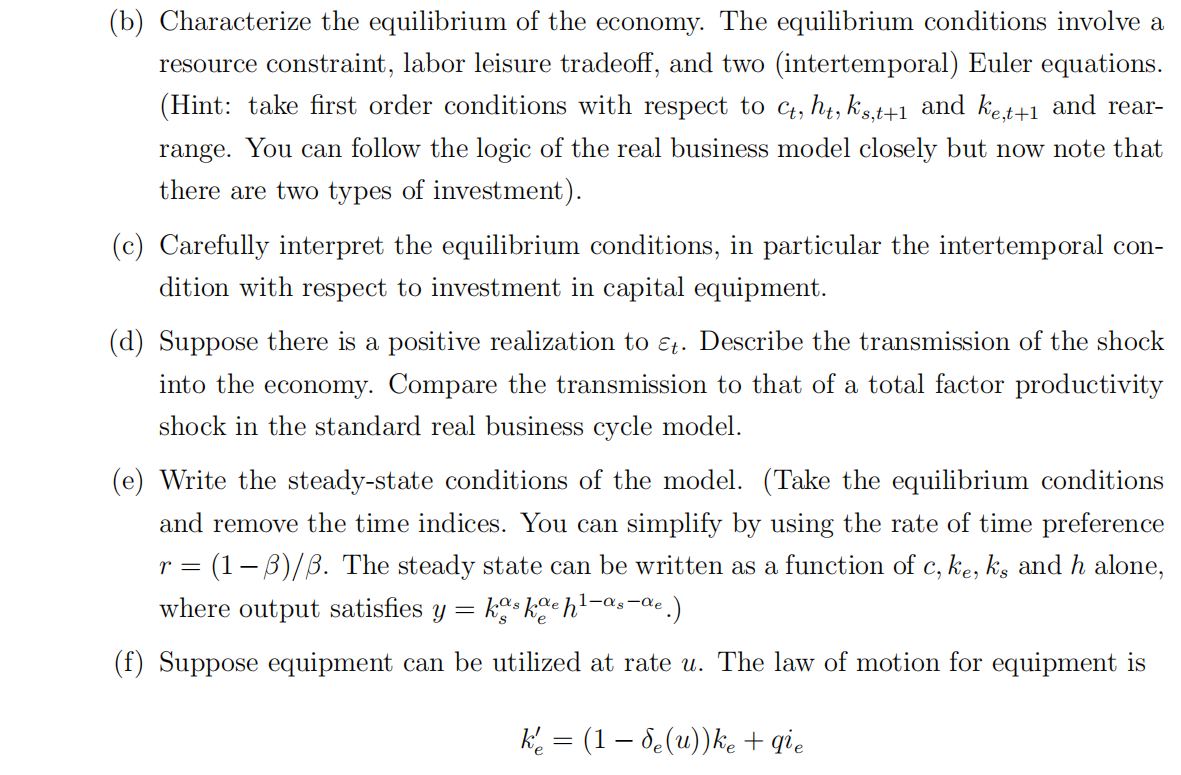Answered step by step
Verified Expert Solution
Question
1 Approved Answer
answer for cdef please where e(u)=0+bu,>1 Production now satisfies y=kss(uke)eh1se. Take the first order condition with respect to u in the household problem. You can


 answer for cdef please
answer for cdef please
Step by Step Solution
There are 3 Steps involved in it
Step: 1

Get Instant Access to Expert-Tailored Solutions
See step-by-step solutions with expert insights and AI powered tools for academic success
Step: 2

Step: 3

Ace Your Homework with AI
Get the answers you need in no time with our AI-driven, step-by-step assistance
Get Started

